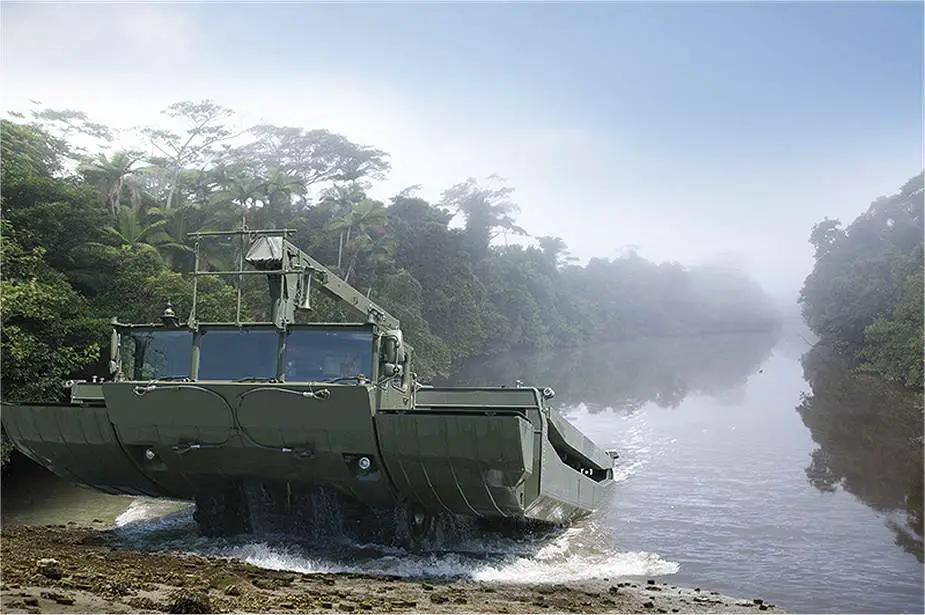According to information published on September 30, 2021, General Dynamics European Land Systems (GDELS) has announced that it and its partner, Hanwha Defense Corporation (HDC), have been selected by the Republic of Korea’s Defence Acquisition Program Administration (DAPA) to jointly produce 110 M3 amphibious bridging vehicles for the Republic of Korea Army.
Follow Army Recognition on Google News at this link

GDELS M3 amphibious bridge and ferry system. (Picture source GDELS)
Under the Korean Amphibious Bridging Vehicle (KABV) program, the GDELS M3 Amphibious Bridge & Ferry System will be localized to meet specific Korean requirements and will be designated M3K. The M3K was chosen in a competitive selection process.
The M3 is a self-propelled, amphibious bridging vehicle that is used for the projection of tanks and other vehicles across water obstacles. The M3 is self-deployable by road, operating as a 4x4 wheeled vehicle with a maximum road speed of 80 km/h. Before it is driven into the water for an amphibious operation, two large aluminum pontoons are deployed, unfolding them along the length of its hull. The crew exits the vehicle cab to maneuver the pontoon using controls located on top of the hull. In water, the M3 is propelled and steered by 2 fully traversable pump jets at speeds of up to 14 km/h
The M3 is the world’s fastest and most capable amphibious bridge and ferry system based on load capacity, assembly time and maneuverability, both on water and land. The M3 is already operated by the militaries of Germany, the United Kingdom, Taiwan, Singapore and Indonesia. With more than 1.3 km of bridge length, the Republic of Korea will operate the largest M3 fleet.
“We are very delighted that the Republic of Korea is the fourth Asian customer to select our M3 as their future amphibious bridge and ferry system,” said Dr. Thomas Kauffmann, GDELS’s vice president of international business and services. “It reconfirms the unique bridging capabilities of the M3 and demonstrates the essential importance of tactical bridging for modern armies in terms of interoperability and military mobility.”
“From an industrial point of view, this project is a great success for our employees here in Kaiserslautern,” said Dr. Christian Kauth, vice president and managing director of GDELS-Bridge Systems. “We have established an excellent collaboration with our Korean partner Hanwha. The success is (further) proof of the general advantage of 4x4 solutions when it comes to amphibious bridging and demonstrates the leading role of GDELS in the military floating bridge market.”














